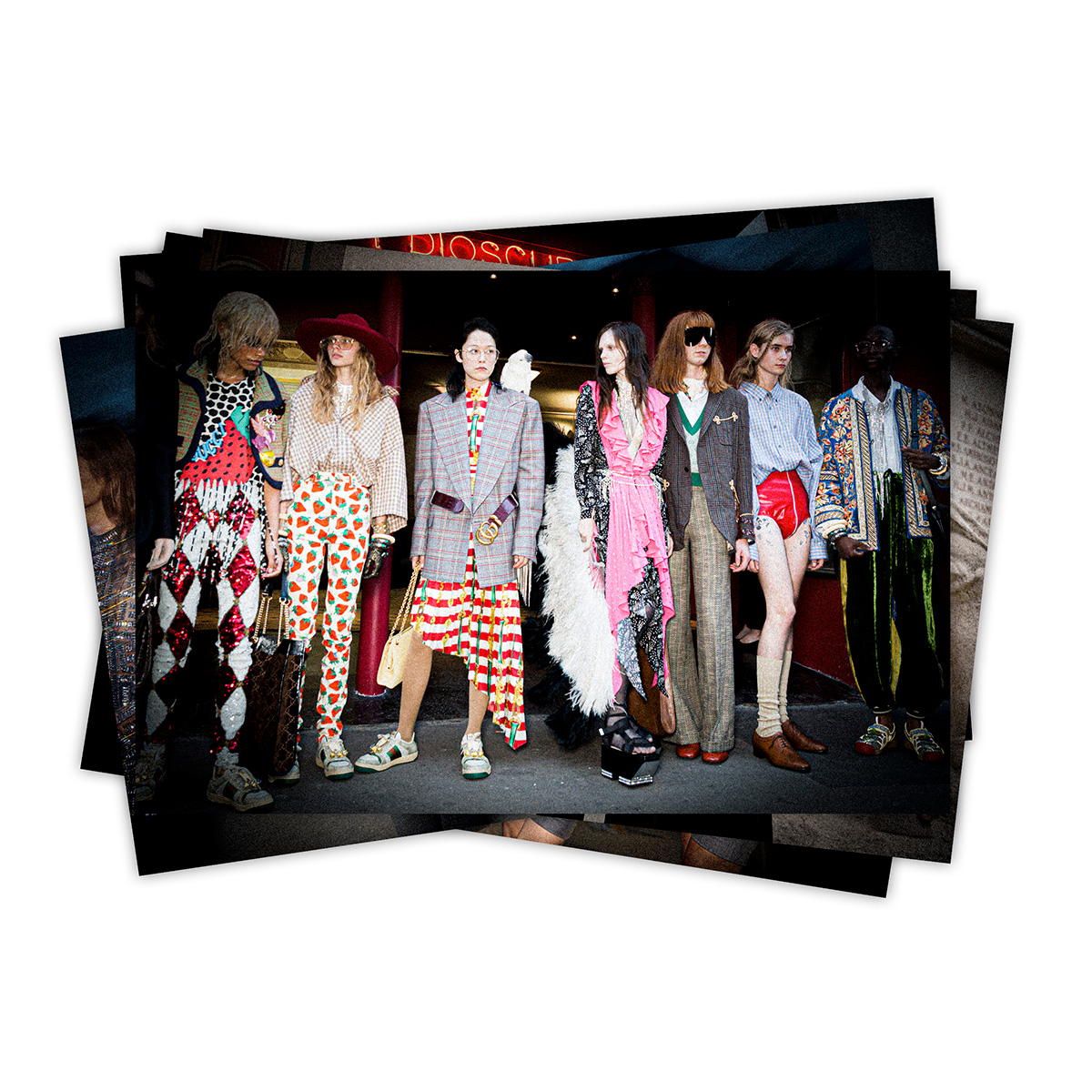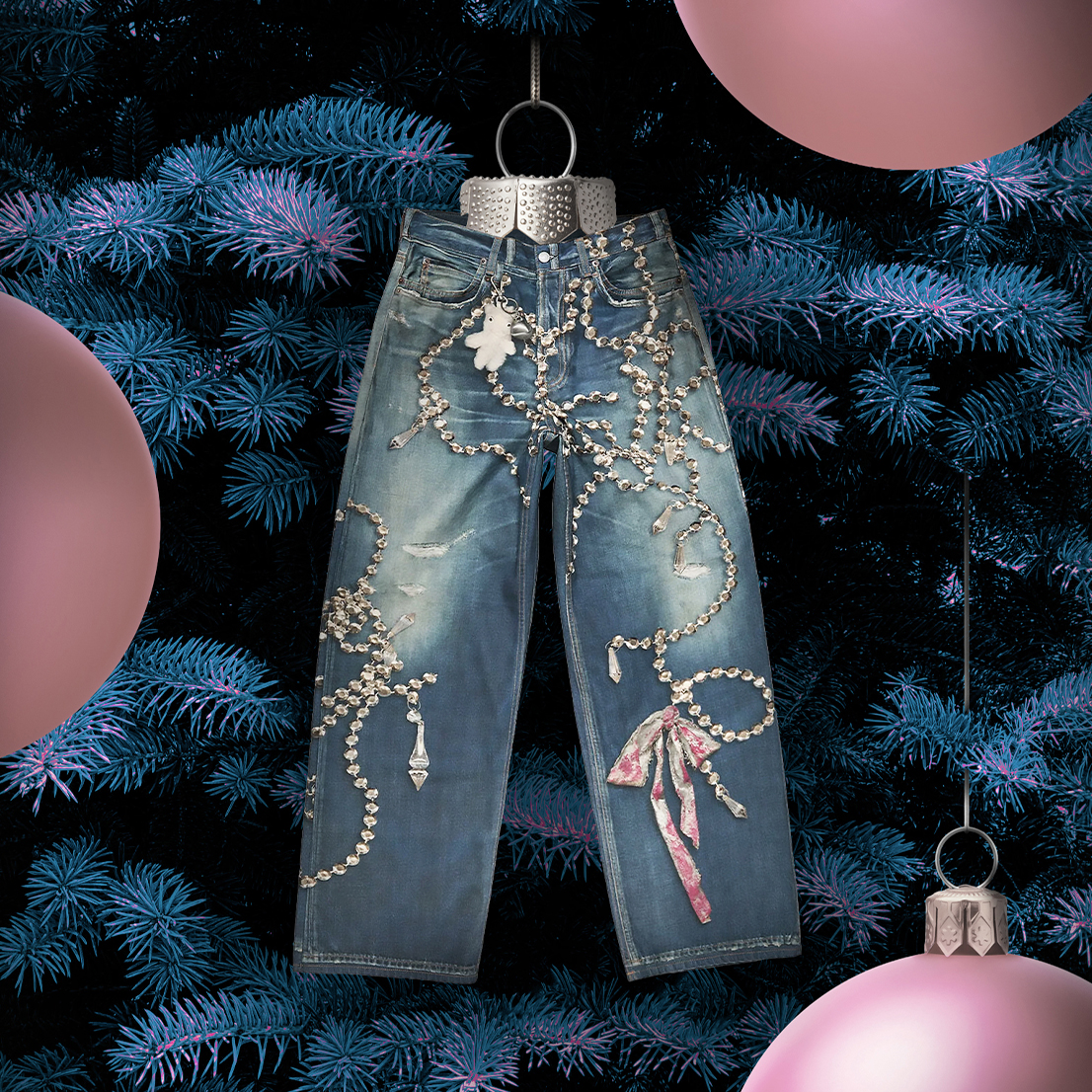There were times when wearing platform Crocs with a sequined dress was considered unthinkable, worthy of a fine by this invisible institution called “fashion police.” Not anymore. This look may never become part of the style manuals, at least of the most traditional, but it has become as commonplace as doing errands wearing pajama pants, ragged sweatshirt and fur boots. Okay, almost as commonplace.
There were times when wearing platform Crocs with a sequined dress was considered unthinkable, worthy of a fine by this invisible institution called “fashion police.” Not anymore. This look may never become part of the style manuals, at least of the most traditional, but it has become as commonplace as doing errands wearing pajama pants, ragged sweatshirt and fur boots. Okay, almost as commonplace.

In November 2017, the prestigious Financial Times newspaper published an article whose title, “Why Is Fashion So Ugly?” left no room for doubt. The text, signed by Lou Stoppard, who was not exactly a newcomer in these wanderings, started with a summary of the (supposed) state of calamity in the industry: “Awkward shapes, huge silhouettes, clumpy shoes and odd headwear. Heinous is so hot right now.” To illustrate the dissertation - one among the hundreds that fill the Internet whenever the topic is ugly-pretty, that term coined to summarize the mix of ugliness and prettiness that first if it is strange and then, with any luck, will be ingrained, and which in recent years has taken the catwalks from all over the world by storm - was one of the looks from the Gucci spring / summer 2018 collection, revealed a few weeks before. Addendum: it wasn't even the most unusual. The journalist, who assumed she had “really ugly clothes”, concluded that many of the clothing presented at the spring/summer 2018 shows were “deliciously horrid.” Here is part of her dismay: “Christopher Kane, the designer responsible for rehabilitating the Crocs as a style statement last year, offered shoes that looked like cleaning mops.” That said, it looks dreadful, in fact. But then came Paul Surridge, Roberto Cavalli's creative director at the time, with an explanation for so much nonsense: “Fashion thrives on provocation. It thrives on novelty. This epidemic of deliberately ugly or awkward pieces is about challenging this obsession with an artificial lifestyle. It’s a sign of the time that what feels current is something that isn’t so perfect and isn’t so insipid.” Has the industry, and its most important creators, been affected by a crisis of negligence? Or is it that this apparent wave of not-so-beautiful pieces (and the concept of beautiful is as broad as the one of love, so if the combo mum jeans + dad trainers can be like a vision of hell for some, it can also mean the supreme of coolness, for others) it is only a reflection of the consumer's mental state, who is tired of artifices and who intends, more and more, to find a style of their own, unique, individual?
According to Stoppard, there is a long-standing theory that holds that ugliness and innovation go hand in hand - as if one did not exist without the other. Let us recall the words of Miuccia Prada, her majesty, queen of all that is not beautiful, but ultra-slick, given in 2012: “Ugly is attractive, ugly is exciting. Maybe because it is newer.” If there is anyone who was never afraid to step on the risk, it is precisely Miss Prada, who has very clear notions about what a ready-to-wear collection should be. From improbable prints to seemingly kitsch fabrics, the Italian designer was never afraid to trample or exceed the limits of good taste. The same could be said of Paul Poiret, the couturier who, in the early 20th century, rivaled Coco Chanel, and who remained true to his aesthetics, even when the reaction to his early works was worse than bad: “What are these ugly experiments?”, was commented on the House of Worth, one of the oldest French haute couture houses. The History of Fashion is full of examples of the genre, however, these two are enough to conclude something very simple: every time a designer comes up with a thought (read, collection) that goes against the system, it is very likely that the first reaction is to think that what he/she is doing is strange. And, ultimately, ugly. It does not matter if it is the Von Dutch caps that Paris Hilton wore in the 2000s, and that are returning smoothly, the tourist sandals used with socks, which we now wear without shame, the cyclist shorts, which we try at all costs to include in the our #ootd, the Ugg boots, which serve as a uniform for both Sienna Miller and Kate Moss. Returning to the Crocs, which gained high-fashion status thanks to Kane and, later, to Balenciaga (by the hands of Demna Gvasalia), and as stated by Joelle Firzli, historian, in an interview with the digital version of the CR Fashion Book, “fashion is pushing the rules to the extreme and playing on the borderline of what is considered beautiful, because, well, it can [...] What is relevant is that we all react to it. Ugliness in fashion makes fashion relevant.”
On the day Alessandro Michele sat down to chat with Nick Haramis, director of the iconic Interview magazine, in late 2018, he had two nails painted red. This is relevant, because it proves that the designer is an active practitioner of that chaos magic that surrounds all his creations. At one point, the interview focused, precisely, on inspiration, on what makes someone invent, and create, something new. “What does inspiration mean, anyway? Nothing. How can it be just one thing? In a moment you can feel like one person, and an hour later you’re someone else. I was painting my nails the other day…” And it was here that the creative director of Gucci, a position he has held since 2015, was interrupted: “But why just two of them?”, shot the journalist. Because, in addition to having a soft spot for varnish since childhood, red is the color that Michele's mother used and, according to him, “it’s so punk." And also because, at a certain point, he ran out of nails to paint, since he was choosing shades for the make-up of a fashion show. “And then I noticed how cute it was that I have these really massive hands with two nails painted red. It made me feel so happy and chic because it’s so wrong. I don’t think I did a very good job, though. I’m getting older, and I can’t see if I don’t have my glasses.” According to the traditional canons of fashion, Michele's proposals are, for the lack of a better expression, "unexpected." They began by being ethereal, then they became extravagant, now they are simply surreal. Or "freaks”, as some journalists who were present at his 2018 autumn/winter show decided - that show where some models held replicas of their cut off heads, while others carried small dragons or snakes. Unless you've been under a rock for the past two and a half years, it is impossible not to know what we are referring to. Essentially, clothing was a wonderful trip of acids that brought together, in the same space, influences from different eras and cultures. It was that and more. It just wasn't "pretty."
As if that were a problem... In an industry that celebrates personalities like Rick Owens, Gareth Pugh or Vivienne Westwood coexist, whose originality cannot live without a certain extravagance, turning on the siren because the Italian decided to transform Gucci into a kind of Land of Oz would be crazy. “I’m always trying in a very delicate way to put together things that are dirty with things that are completely clean, things from the bourgeois and things that belong to the ghetto, things that are completely broken with things that are well done.” So explained Michele, in that interview, his modus operandi. And he continued: “I never feel the need to say something new. It’s new just by the way I say it. It’s new because it occurs in the right moment. If I read a poem in front of you now, even a really old one, it would be new for us even though it’s not. […] Art is about connection. No real artist wants to make a piece and close it in a box so that nobody gets to touch it. In the same way, fashion is about connection. It’s no longer enough to make chic clothes and put them in a boutique. Fashion is supposed to be alive. It comes from the streets, from music, from the club.” That is why, today, even the most inattentive viewers react with appreciation to his boldness. Whether in the ready-to-wear line, which appeals to a genderless notion, or in the most recent Gucci Beauty, which is a hymn to imperfect and natural beauty, Michele's wisdom lies in knowing how to read, long before other peers, the signs of the times. Women still want to wear nude stilettos and little black dresses. Men still want to have at least one classic suit, with a good cut, in their wardrobes. But that does not prevent them from (wanting) to explore other levels of their aesthetic and sensory universe, and to dare, here and there, with pieces that, at the outset, would not make any sense until someone shows them that there is a new path to follow. And that path could be called, to our delight, ugly-pretty.
The term goes back to 2014, when the industry was on the verge of a nervous breakdown with a (supposedly new) “ugly-cute” trend, which called for a mixture of everything that, until then, was “right” and “ wrong ”in fashion. The catwalks were awash with ultra-fancy dresses combined with sandals and shoes that were an affront to the notion of elegance, kitsch ornaments sewn into everything that were knitted jackets and sweaters and sweaters, the mix of patterns reappeared, in a mix and match that hurt the eyes of the most sensitive, and the defunct parkas, which we thought we buried in the 1980s, took on the proportions of the Michelin symbol. First reaction: the Gods must be crazy. Second reaction: the most spectacular thing about this mini-revolution was to encourage the public and, ultimately, the buyer, to break with their previously conceived notions of what it means to be "ugly", and not to be afraid to play with these new pieces - strange pieces, yes, but that arrived in the exact moment when all of us needed to risk a little. They arrived to shake our prejudices. To make us dream. This is, above all, what sustains and justifies this obsession with ugly-pretty - its ability to make us dream, especially because, as it is known, in dreams we are all wonderfully, magically, beautiful, even with platform Crocs. Especially with platform Crocs.
Originally published on Vogue Portugal November issue, "The Beauty of Imperfection."
Most popular

Relacionados
.jpg)
.jpg)





